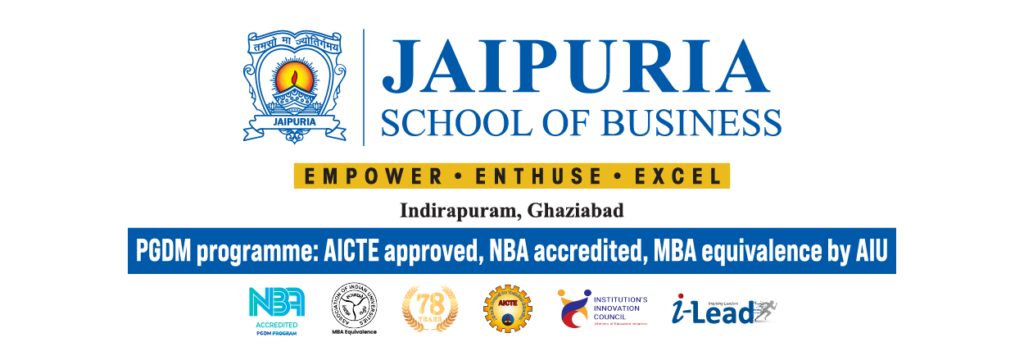Introduction:
The ever-changing global market demands efficient and streamlined supply chain management to ensure businesses remain competitive and profitable. At JSB, the best pgdm college in delhi ncr where supply chain optimization has become the backbone of operations management, enabling companies to reduce costs, improve service levels, and maintain customer satisfaction. Educational institutions offering advanced PGDM programs are equipping future leaders with the tools and insights to master supply chain strategies. Here, we explore the best practices in supply chain optimization and their real-world applications.
1. Leveraging Data Analytics for Decision-Making
Modern supply chains generate massive amounts of data. By analyzing this data, businesses can uncover inefficiencies, predict demand, and improve decision-making. Companies like Flipkart and Infosys utilize advanced data analytics tools to optimize their supply chains, enabling them to anticipate customer needs and reduce lead times. Key steps include:
- Implementing predictive analytics to forecast demand.
- Using real-time data for inventory management.
- Optimizing routes and logistics with data-driven insights.
2. Building Strong Supplier Relationships
A reliable supply chain is built on strong relationships with suppliers. Collaborative partnerships help businesses ensure consistent quality and timely delivery. Companies such as Nestle and ITC Limited have excelled in this area by:
- Sharing forecasts and demand data with suppliers.
- Establishing clear communication channels.
- Implementing supplier performance monitoring systems.
3. Embracing Technology and Automation
Technology is a game-changer in supply chain optimization. Automation and digital tools streamline operations, reduce errors, and improve efficiency. Organizations like Acuity Knowledge Partners and Federal Bank integrate technologies such as:
- ERP (Enterprise Resource Planning) systems for end-to-end visibility.
- Robotic Process Automation (RPA) for repetitive tasks.
- Blockchain for transparent and secure tracking of goods.
4. Adopting Sustainable Practices
Sustainability is no longer optional; it is a business imperative. Companies like Zydus and AU Small Finance Bank are prioritizing eco-friendly supply chain practices by:
- Minimizing waste through circular supply chain models.
- Reducing carbon emissions with optimized logistics.
- Partnering with eco-conscious suppliers.
5. Focusing on Demand Planning and Forecasting
Effective demand planning ensures that businesses maintain optimal inventory levels without overstocking or understocking. Leading firms such as PwC and Flipkart leverage sophisticated forecasting models that combine historical data with market trends. Best practices include:
- Conducting regular demand-supply reviews.
- Incorporating market intelligence into forecasts.
- Adjusting plans dynamically based on real-time data.
Learning Through Expert-Led Sessions
Educational institutions play a pivotal role in shaping future supply chain leaders by offering practical insights and exposure to industry practices. Notable initiatives include:
- I Lead Talk Series: Sessions led by Mr. Sanjiv Mittal provide insights into leadership and innovation in supply chain management.
- International Talk Series: Experts like Dr. John Christopher Walsch, D.Phil, and Prof. Mark Lennon discuss global trends and challenges in operations management.
- Practitioner Sessions: Industry professionals such as Mr. Sudhanshu Shekhar, Dr. Abhishek Sharma, and Mr. Vivek Kumar share real-world experiences and case studies.
6. Enhancing Agility in Supply Chains
In today’s volatile market, agility is key to responding to disruptions quickly. Practices that enhance agility include:
- Diversifying supplier bases to mitigate risks.
- Implementing flexible logistics solutions.
- Utilizing digital twins for scenario planning and rapid adjustments.
Organizations like Infosys and Federal Bank have demonstrated exceptional agility by leveraging technology and robust contingency plans.
7. Prioritizing Customer-Centric Strategies
Supply chains must be designed with the end customer in mind. Companies like Nestle and ITC Limited prioritize customer satisfaction by:
- Reducing delivery times through optimized logistics.
- Offering customizable product and delivery options.
- Ensuring product quality and safety throughout the supply chain.
8. Ensuring End-to-End Visibility
Visibility across the supply chain allows for better control and decision-making. Companies like PwC and Zydus achieve this through:
- Implementing IoT (Internet of Things) devices for real-time tracking.
- Integrating systems for seamless data sharing across stakeholders.
- Using AI-powered dashboards to monitor key performance indicators (KPIs).
The Role of Global Exposure in Supply Chain Optimization
Institutions offering PGDM programs provide students with a global perspective on supply chain management through:
- I Lead Events: Dr. V.P. Singh’s sessions focus on leadership strategies and innovations in global supply chains.
- International Collaboration: Opportunities to learn from global experts enable students to understand diverse markets and best practices.
The Future of Supply Chain Optimization
As the business environment continues to evolve, supply chain optimization will be driven by emerging trends such as:
- Artificial Intelligence (AI) and Machine Learning (ML): These technologies will enhance predictive capabilities and automate complex processes.
- Resilience and Risk Management: Organizations will invest in building resilient supply chains that can withstand disruptions.
- Sustainability and Circular Economy: The shift towards sustainable practices will drive innovation in recycling, reuse, and waste reduction.
- Customization and Personalization: Supply chains will become more customer-focused, offering tailored products and delivery options.
Conclusion
Supply chain optimization is an essential component of successful operations management. At JSB, the top pgdm colleges in delhi ncr where by adopting best practices such as leveraging data analytics, embracing technology, and prioritizing sustainability, businesses can achieve significant improvements in efficiency, customer satisfaction, and profitability.
With the support of industry collaborations, expert-led sessions, and global exposure, future leaders are well-equipped to navigate the complexities of modern supply chains. As organizations like Nestle, Flipkart, and PwC continue to set benchmarks, the importance of optimized supply chain strategies will only grow in the coming years.

